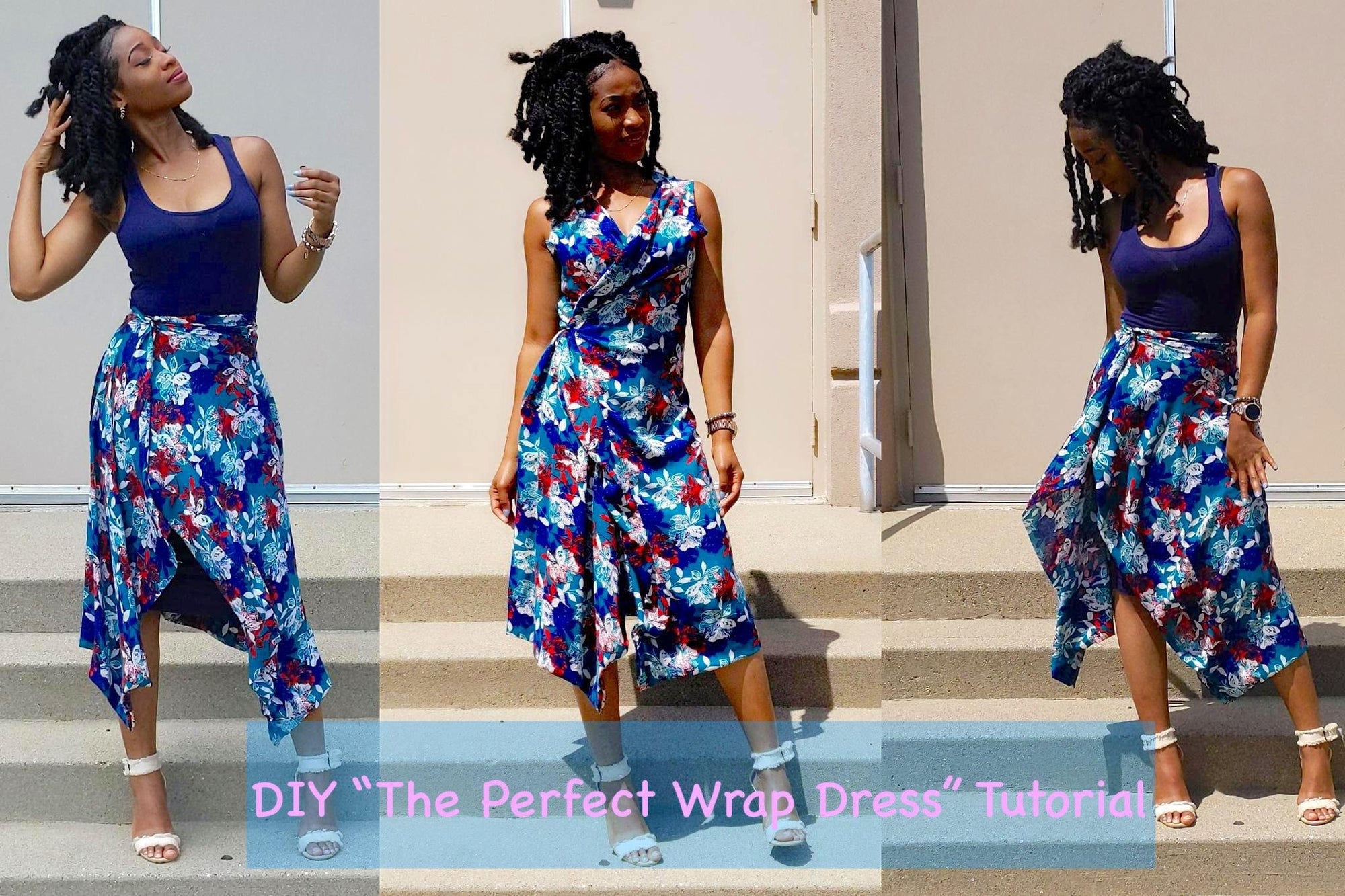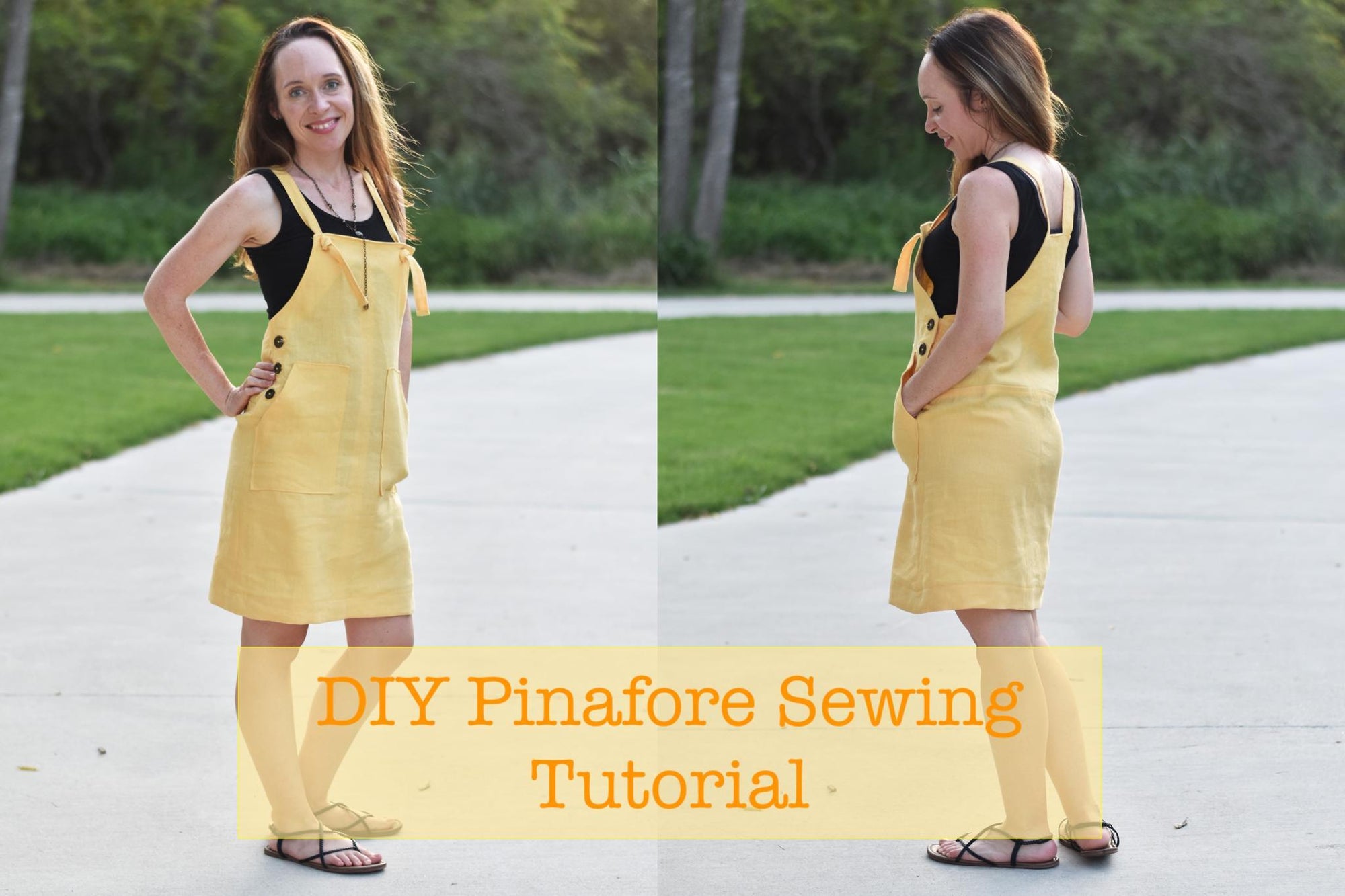A DIY Paperbag Waist Skirt Sewing Tutorial Using Linen Fabric
People watching while commuting into the city for work everyday is my favorite way of keeping up with the latest fashions. I can't help but ogle over the beautiful clothes I see women wearing on a daily basis. It's even better than perusing fashion magazines because the way real life women style these clothes is much more practical for every day wear. One morning not too long ago, I saw a woman wearing the most adorable midi-length paper bag waist skirt and I just knew I wanted to make one for myself. I'm always looking for comfortable yet stylish clothes and I knew this would fit the bill perfectly. I'm excited to have a few more summer days to enjoy this cute skirt, maybe with a cute blouse or a simple tank tucked into it. But I am also picturing it transitioning perfectly into Fall with a long sleeve t-shirt and some booties.
Supplies:
- 2 yards of linen fabric
- Thread to match fabric
- 3/4" non-roll elastic
- Quilting Ruler
- Sewing Machine
- Fabric Scissors
- Measuring Tape
- Heat Erasable Fabric Marking Pen
- Pins
Time:
8 Hours
Difficulty:
Medium

*All seam allowances used in this tutorial are 1/2" unless otherwise noted.
- Wash and dry your fabric to ensure shrinkage doesn't happen after your garment is completely made. (This is every seamstress's worst nightmare!) Make sure to serge or zig zag stitch the raw edges before throwing your fabric into the washing machine so that it doesn't fray while being washed.

- Iron your fabric after it's been dried to prepare for cutting. Fabric that is too wrinkly could result in inaccurately cut pattern pieces.

- Measure your waist. For reference, my waist is 29", so the skirt being made for this tutorial will be made in that size.
- Measure how long you want your skirt to fall down your legs. For reference, I am 5' 2" and I like my skirts long. So I decided I would like my skirt to be 22" long.
- Cut two rectangles according to the measurements you took in steps 3-4. The top edge of your rectangle should be your waist measurement plus 1" for seam allowance. The long side of your rectangle should be the length you decided upon plus 7" (5" for what will be folded over to create the paperbag waist effect and 2" for the hem.) See chart below. Based on my measurements, each of my skirt pieces came out to be 30" wide x 31" long.

- Cut out four pocket pieces using the pattern piece below.

- Stitch the straight edge of one pocket piece to one side of a skirt piece 5" down from the top edge. Repeat using the three remaining pocket pieces along the three remaining skirt sides. After this, you can serge or zig zag along those four edges to keep them from fraying.

- Press the seams you just sewed towards the pocket.

- Top stitch towards the side of the pocket, 1/8" from the edge of the seam.

- Sew down the side seams of your skirt, making sure to go around the curved edge of the pocket as well. Starting from the top down is recommended in case the bottom edges don't perfectly match up. If this happens, you can even if out afterwards.

- Serge or zig zag the curved raw edge of your pocket seam and press them towards the front of your skirt.
(*The following step is optional. I just like that it keeps the pocket in place and serves as a subtle design detail.)
- Pin down the curved edge of the pocket to the front of the skirt and stitch. The top edge of the pocket will be sewn down along with the waistband later on.


- Fold down the top edge of your skirt 1/2" and press.

- Fold down the top edge of your skirt another 2 1/2" and press again. Now stitch along the bottom folded edge, leaving about a 2" gap open in the center back.

- Using your heat erasable fabric marking pen, draw a line 3/4" above the stitch line from step 14 on the wrong side (wrong side = inside) of your skirt all the way around. Then stitch along this line. Afterwards, press the waistband one last time to remove your markings and make sure everything is laying nicely.

- Cut a piece of elastic 2" smaller than your waist measurement and attach a safety pin to one end of it. Now, entering through the gap you left in the center back, use the safety pin to draw the elastic through the channel you created with your stitch lines from steps 14 and 15.
- Try on your skirt to make sure the waist is not too tight or too loose.
- If you are happy with the fit of the waist, stitch the two ends of the elastic together with a 1" overlap.

- Stitch the gap you left open in the center back closed. You can also top stitch your elastic down in the center back. This will help keep your elastic from twisting.

- Fold up and press 1" along the bottom edge of your skirt.

- Fold up and press another 1" along the bottom edge of your skirt. Pin down and stitch along the top folded edge to hem your skirt.

- Your skirt is now finished and ready to enjoy!


 Transparent
Transparent
 White
White
 Pink
Pink
 Red
Red
 Orange
Orange
 Ivory
Ivory
 Yellow
Yellow
 Gold
Gold
 Brown
Brown
 Green
Green
 Blue
Blue
 Purple
Purple
 Grey
Grey
 Black
Black
 Multi
Multi
 Abstract
Abstract
 African Print
African Print
 Animal Print
Animal Print
 Baby & Nursery
Baby & Nursery
 Buffalo Check
Buffalo Check
 Camo Print
Camo Print
 Celestial
Celestial
 Chevron
Chevron
 Church
Church
 Damask
Damask
 Embroidered
Embroidered
 Floral
Floral
 Geometric
Geometric
 Gingham Check
Gingham Check
 Houndstooth
Houndstooth
 Licensed
Licensed
 Paisley
Paisley
 Plaid
Plaid
 Polka Dot
Polka Dot
 Sports
Sports
 Stripe
Stripe
 Tie Dye
Tie Dye




















